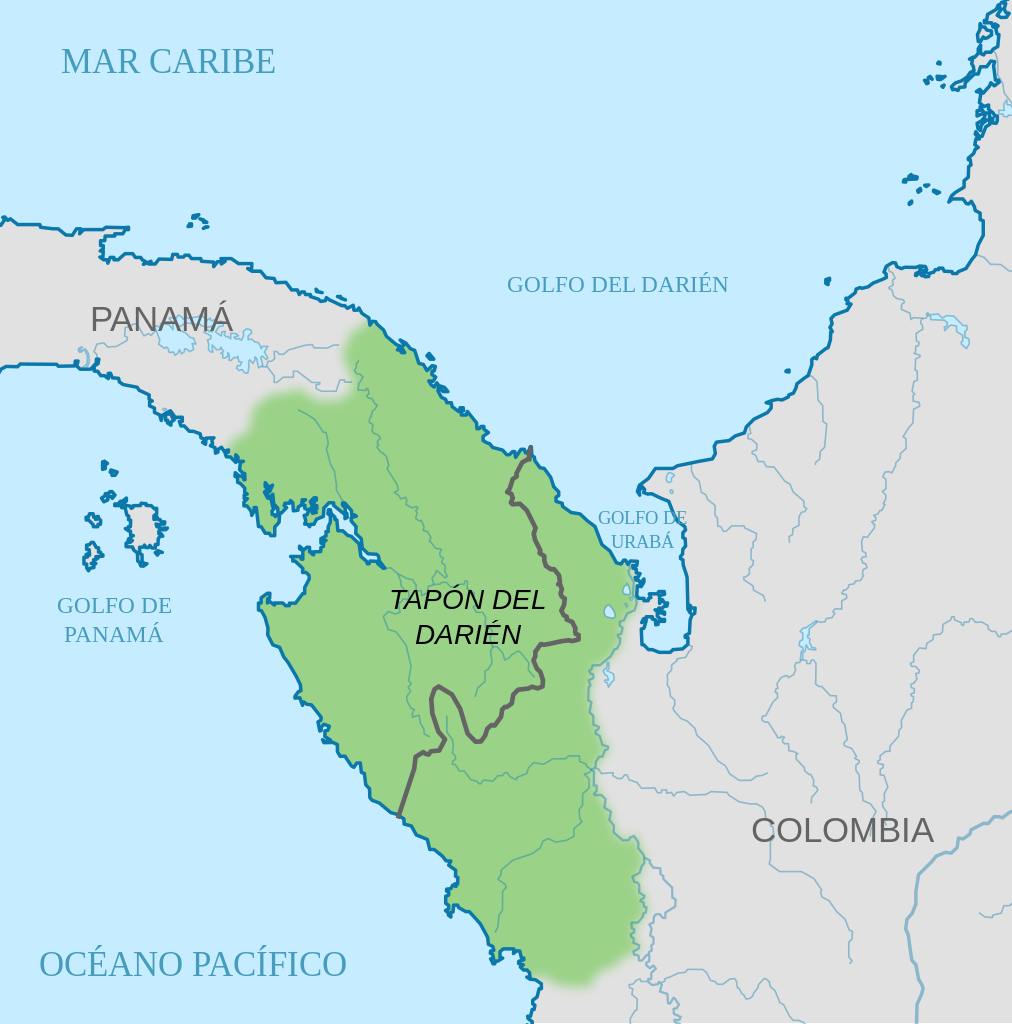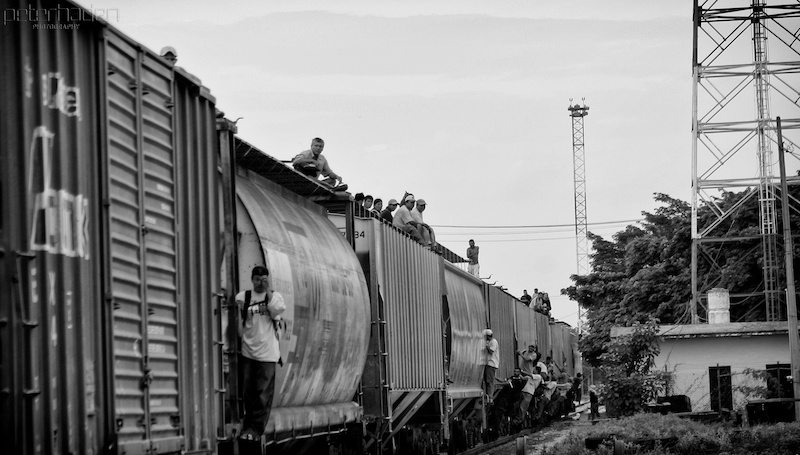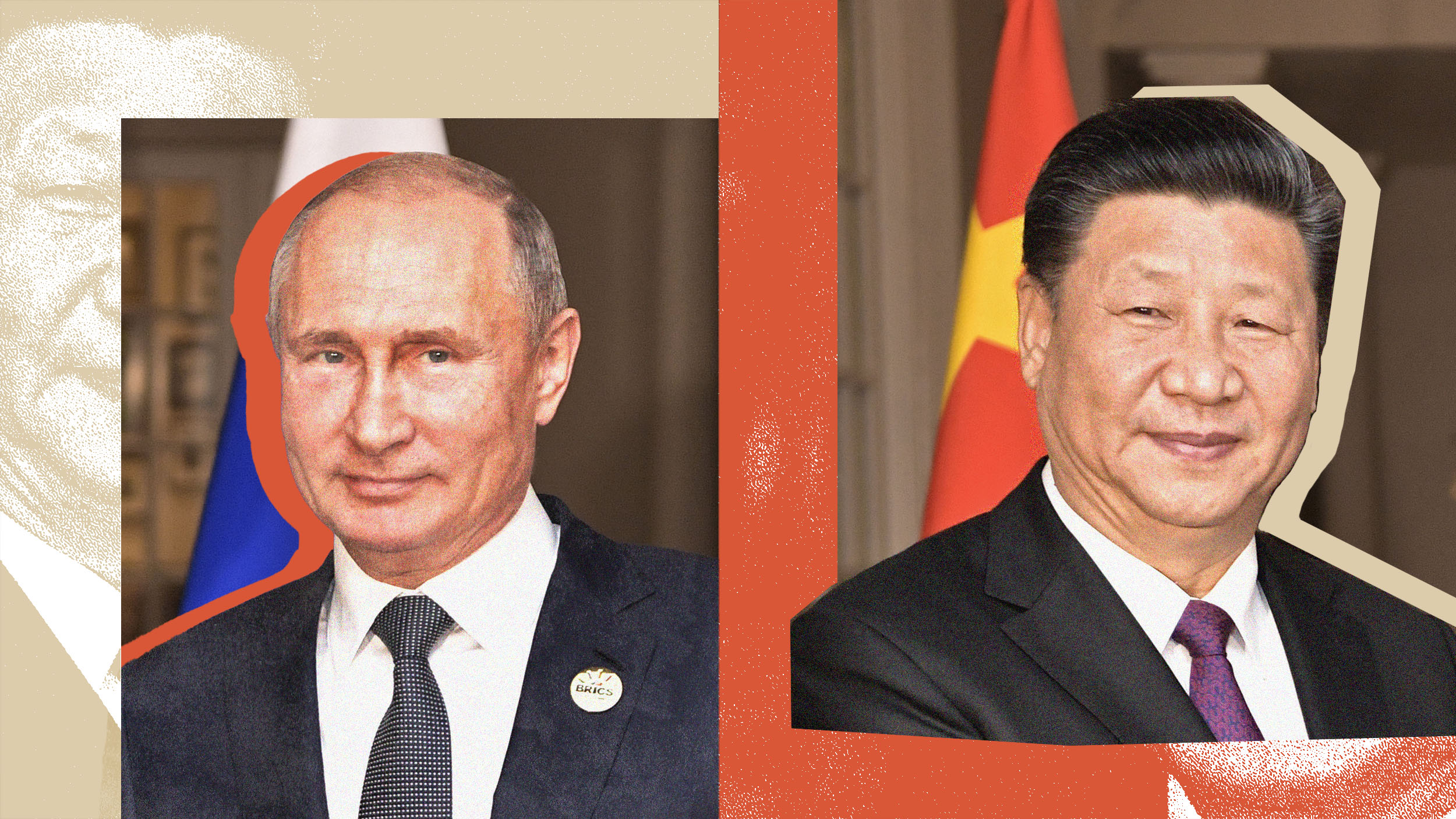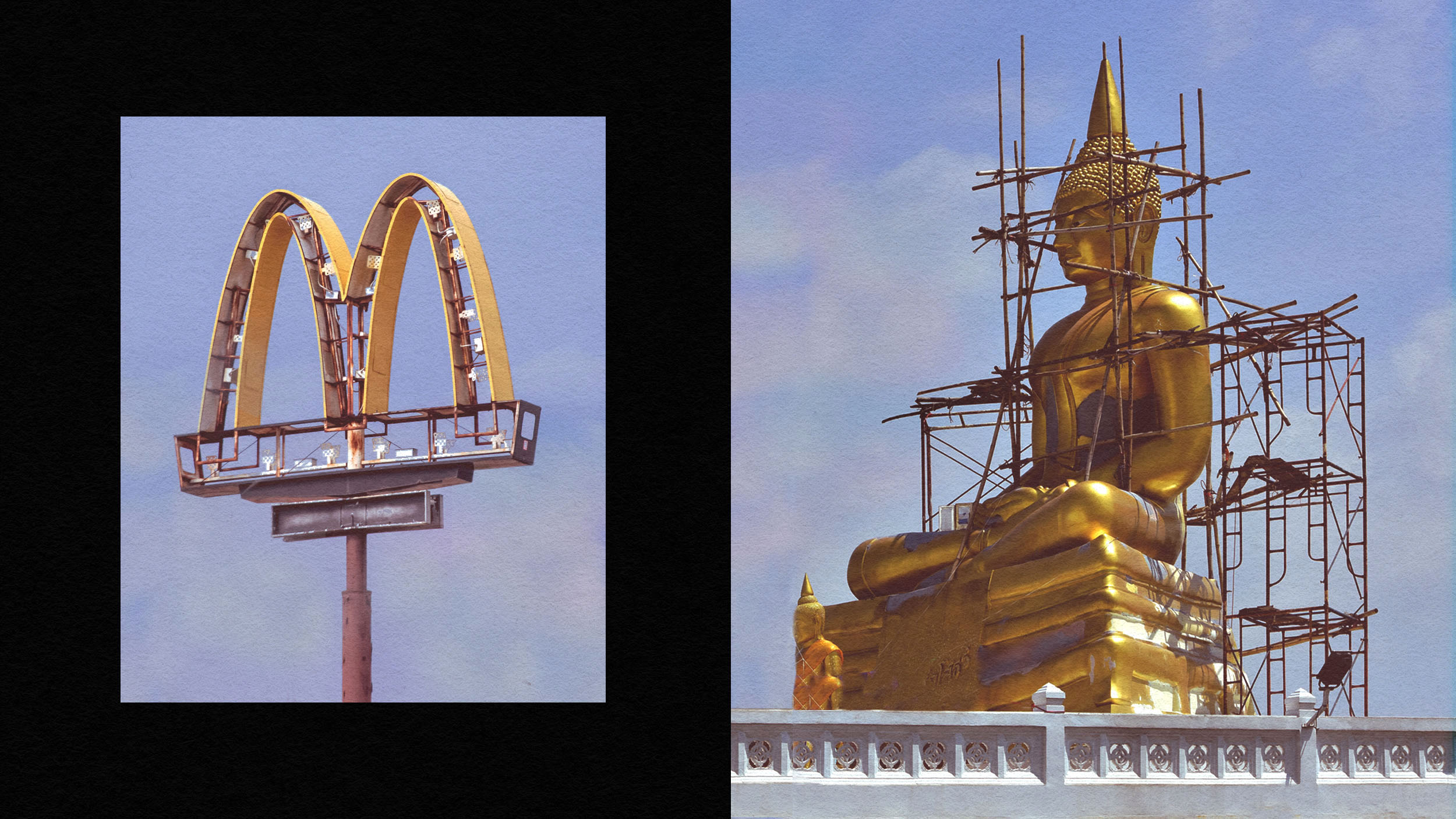This travel vlogger crossed the Darién Gap, the world’s deadliest migrant route

- Two YouTubers followed South American migrants on their journey to the US.
- Along the way, they had to traverse the Darién Gap: a 100-mile-long stretch of undeveloped jungle.
- Their recordings document the hardship migrants endure in search of a better life.
As a tall Greek man in his mid-twenties, Timmy Karter stands out from most of the migrants risking their lives to cross the Darién Gap, a 100-mile-long, 30-mile-wide undeveloped jungle separating Colombia and Panama. Unlike the migrants, Karter isn’t there in the hope of one day starting a better life in the United States. He’s a YouTuber who travels to the world’s most dangerous and desolate places, sharing his experiences with an audience of nearly 400,000 subscribers.
Karter has explored the favelas of Rio de Janeiro, met with the cocaine mafia in Nicaragua, and braved the streets of Latin America’s murder capital, San Salvador. However, crossing the Darién Gap has to be the riskiest project he’s ever undertaken and likely ever will. During the five-day journey through the jungle alongside YouTuber Benjamin Rich, better known as Bald and Bankrupt, he had to ward off injury, disease, starvation, dehydration, wildlife, and the watchful eyes of the Colombian cartel, who financially extort the already impoverished migrants — colloquially known as caminantes, or “walkers” — in exchange for their dubious protection.
The number of content creators documenting extreme adventures has exploded in recent years. British athlete Russ Cook just finished a 352-day journey running from Cap Agulhas in South Africa to Ras Angela in Tunisia. American vlogger Mike Corey (Fearless & Far) has filmed himself hunting with Mayan tribes in Mexico and stealing scrap metal with pirates in Angola. Drew Binsky has visited every country on Earth, including North Korea, and turned his travels into a veritable media empire. Karter and Rich stand out from the bunch insofar as their videos aren’t so much about exploration and thrill-seeking as they are about providing an unfiltered look at the everyday existence of people born into poverty and political oppression.
Their videos constitute the first time a filmmaker has followed the caminantes on foot every step of their way, from the outskirts of Colombia to the frontlines of the US border. In the following interview, Karter, calling from Miami, describes what it was like.
Entering the Darién Gap
“I was in Colombia in November 2022 searching for ideas for videos on Google,” Karter says. Almost immediately into the call, he’s interrupted by a fan who recognizes him. “I saw articles about the Darién Gap people from Venezuela were crossing. I was curious why they were taking this risk, how they did it, and if it was really that dangerous. I thought it would make for a good documentary.”

Before embarking on the journey, he met up with Rich, who had the same idea. The hairless Englishman started his Bald and Bankrupt YouTube channel in 2018, after a failed business venture. A fluent Russian speaker interested in Soviet history, most of his videos take place in countries ruined by decades of communist rule, including Moldova, Kyrgyzstan, and Mongolia. He was in Kiev when Russia invaded Ukraine and joined the first wave of refugees on their escape to the border. In May 2022, he was arrested for filming an unauthorized video inside the Baikonur Cosmodrome in Kazakhstan. After spending a brief period in a Russian jail, he had to record a personal apology for Vladimir Putin, after which he was kicked out of the country and banned from ever returning.
To enter the Darién Gap, Karter and Rich had to purchase a bracelet from the Colombian cartel, who escort migrants up until the Panamanian border. To obtain protection, they had to lie about their identity. “No one knew we were journalists,” Karter said. “If they did, we would be dead, kidnapped by the cartel. We told them we were from Russia, escaping the war because we did not want to go into the army. If they had looked in my bag, it would have been over. They would have asked why I had a camera and a Greek passport. Most of the footage I have is from after the mafia let us across the border. I pulled out my little go-pro and told the migrants I was filming for my mother.”
On their first attempt to enter the Darién, they were caught by the Panamanian military and sent back to Colombia. The next day, they tried again, opting for a less secure yet longer and more dangerous route. The cartel drove them to their camp, from where they joined other caminantes on their march into the jungle. The majority were Venezuelans, fleeing the disastrous rule of communist dictator Nicolas Maduro, but they also met Colombians, Haitians, and even a couple of Afghans and Nepalese. Together, they set off on a trek they were told would take about five days, provided nothing happened to them along the way.
Survival mode
Crossing the Darién Gap is as much a physical challenge as a mental one. The terrain is treacherous, changing from loose gravel to muddy ground turned into quicksand by the rain. Because many of them cannot swim, the caminantes hold hands when crossing rivers, the currents beating against their bodies. Climbing up steep, craggy hillsides holding on to thin, old ropes hitched up by previous migrants is hard and scary enough as it is, but even harder and scarier when you’re old, pregnant, or carrying a tired toddler in your arms.
Falling is a constant fear. “You can get injured every step,” Karter says. “If you tear your ACL or something, that’s it. No one will carry you.” Karter sprained his ankle, while Rich lost several toenails. Their feet were soaked for days on end, putting them at risk of developing gangrene. One of the caminantes’ shoes fell apart. When Rich asked him what he was going to do, the caminante laughed and said he’d have to carry on barefoot. At night, the YouTubers camped in a single-person tent, surrounded by the heaps of items belonging to previous caminantes — medicines, diapers, clothing — anything they were willing to discard to lighten their load.
Food and water weigh you down, so the caminantes enter the Darién Gap with only the bare essentials. Karter and Rich ran out of supplies half way through the journey. By the time they made it out of the jungle, their faces had grown noticeably thin.
“The most difficult part was mentally, though,” Karter says. “You don’t know when it will end. There is no guide telling you how far you have to go, how many days you have left. You just keep going. People freak out and give up.” As the better Spanish speaker of the two, Karter overheard the cartels discussing things of which Rich remained blissfully ignorant. “Why are those Russians here?” “Why don’t they just fly directly to Mexico?” Pulling out their cameras was dangerous, as this only raised the cartel’s suspicions.
Mortality rates are tricky to come by, but a study from the International Committee of the Red Cross estimates that more than 60 people who entered the Darién Gap in the first six months of 2023 did not make it out alive. During their journey, Karter and Rich saw several caminantes who had died along the way, or would probably die soon. They saw the naked body of a man poking out between the rocks next to a river. Later, they encountered a caminante who had been given the dignity of a proper burial, a cross made from twigs sticking out of their makeshift grave.
At one point, they passed a mother, father, and baby sitting by the side of the path, begging for food from passersby. The other caminantes just walked past them – Karter and Rich included. They had already run out themselves, but even if they hadn’t, they doubt they would have given it to them.
“It’s difficult to have compassion for other people here in the Darién,” Rich confesses in his YouTube video, which currently has over 4.6 million views. “That sounds brutal and harsh when you’re sitting at home watching this video on the internet, in America, on your comfy homes in England, wherever you are. But when you’re here, and it’s a matter of life or death, that’s the reality of it. You can either save yourself or you can save someone else. And when it comes down to it, we’re all selfish.”
Karter concurs. “The first day I was there, I thought: Let’s help people,” he tells Big Think. In his video, he and Rich argue because Karter gave one of their cans of tuna to a fellow caminante, something he admits he shouldn’t have done without prior discussion. As his energy decreased and his hunger and thirst grew, he, like everyone else in the Darién, stopped helping others. “You go into survival mode. It’s cruel.”
The other side
Following a trail of blue plastic tied to trees, as well as the occasional rock with directions carved into its surfaces, Karter, Rich, and the other caminantes in their group eventually made it out of the jungle, where they were taken to a border checkpoint. They spent almost two weeks in a refugee camp while the Panamanian police determined what to make of them. Ultimately, they were given permission to enter Panama, after which their journey continued north, through Central America, to Mexico and — finally, the United States — which they reached on the infamous, migrant-transporting freight train La Bestia: the subject of another video.

Although Karter has received some criticism for his video, accusing him of exposing the migrant route and capitalizing on the caminantes’ suffering for clicks and likes, the vast majority of the responses have been positive, with people believing the video to have both social and political value.
“I would like to thank you for documenting this harsh reality,” one comment on YouTube reads. “I went with my mother and my two little brothers of 4 and 5 years old. I was 16 and my mother was 37. Thank you very much for showing the world the harsh reality that migrants go through, we are not the face of a nation, we are people in need of a better life.”





